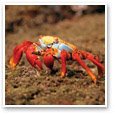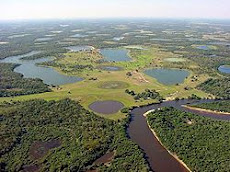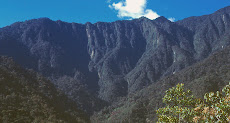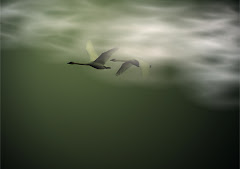
Location
The Galapagos archipelago lies about 620 miles (1,000 kilometers) off the coast of Ecuador in the Pacific Ocean. It is comprised of 19 islands, 42 islets, and more than 100 cays and encompasses more than 3,000 square terrestrial miles and over 52,000 square miles of marine areas, making it one of the five largest marine reserves in the world.
AnimalsAlthough all the fauna of the Galapagos have ancestors on the mainland, the species have evolved in isolation for more than 4 million years, making the islands a paradise for unique species found nowhere else on Earth. These include 11 different giant tortoise species (each species residing on a different island), “vampire” finches, which evolved to include blood in their diets, Galapagos sea-lion, Galapagos hawk, Galapagos penguin, land iguana, marine iguana, and flightless cormorant.
The marine reserve, considered one of the most biologically rich areas in the Pacific, lodges hammerhead sharks, dolphins, sea turtles and whales, as well as invertebrate species such as sea cucumbers, lobsters, and the sea hedgehog.
PlantsMost of the terrestrial parts of the Galapagos are covered by xeric shrublands, a habitat type that is characterized by bushes and short and stubby trees and cacti. However, there are a few areas covered by more humid zones with plants such as the giant daisy, which is found nowhere else on Earth.
AnimalsAlthough all the fauna of the Galapagos have ancestors on the mainland, the species have evolved in isolation for more than 4 million years, making the islands a paradise for unique species found nowhere else on Earth. These include 11 different giant tortoise species (each species residing on a different island), “vampire” finches, which evolved to include blood in their diets, Galapagos sea-lion, Galapagos hawk, Galapagos penguin, land iguana, marine iguana, and flightless cormorant.
The marine reserve, considered one of the most biologically rich areas in the Pacific, lodges hammerhead sharks, dolphins, sea turtles and whales, as well as invertebrate species such as sea cucumbers, lobsters, and the sea hedgehog.
PlantsMost of the terrestrial parts of the Galapagos are covered by xeric shrublands, a habitat type that is characterized by bushes and short and stubby trees and cacti. However, there are a few areas covered by more humid zones with plants such as the giant daisy, which is found nowhere else on Earth.

















